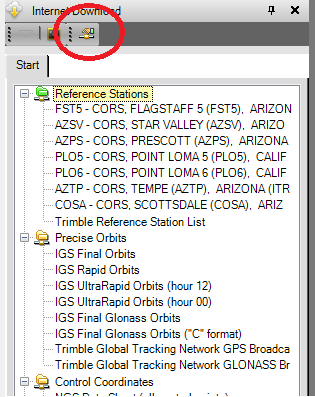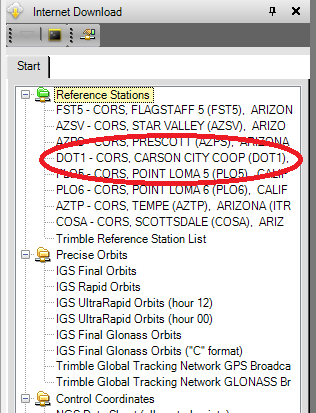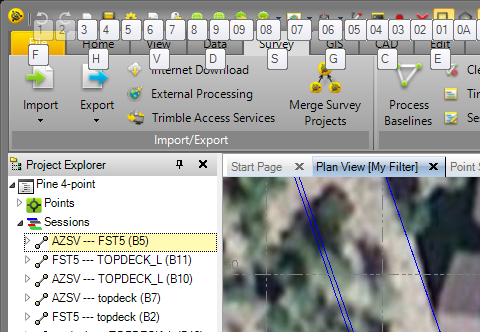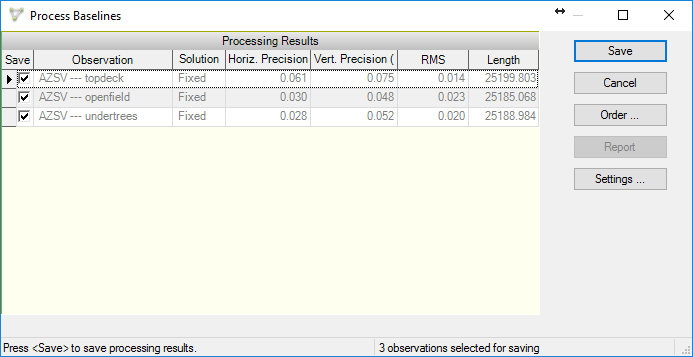Advanced Topics: Trimble Business Center Basics
Background and Overview
Trimble Business Center (TBC) is a commercial software application that includes the ability to post-process L1 only RINEX data files. This introduction outlines the basic workflow for importing your RINEX files from the Bad Elf, setting up a reference station, and processing of a baseline to produce a corrected result.

Post-Processing Basics
Before you can begin post processing open up a new project in TBC. This project is the container for your imported RINEX files, files delivered from reference stations and the post processed results. Once the project is created follow the steps below to import your data.
- Import your RINEX .OBS files. The pointID will reflect the name you provided in the Bad Elf app. You may choose to change it at this time.

- Import data from your reference station. Data is typically imported from the Data tab using the Internet Download feature. When you click on Internet Download a list of reference stations will appear . If your reference station is listed, click on the reference station in the list and then click on the “Automatic” button. Follow the remaining prompts to import your data.
- If your reference station is not listed you will need to add a reference station. This section outlines how to add a CORS reference station.Click on small icon Internet Download Configuration, then click on select from list. Pick your CORS station and select OK. The new reference station is now in the list.


- Click on your reference station and then click Automatic at the bottom. Data will now be imported from the CORS Station that covers the time period of the project.
- From the Survey tab, click on process baselines

- Results from your post processing are shown in the Process Baselines dialog


For more information on how to begin a raw recording session or how to offload raw recorded data consult the following help articles.
Raw data recording with a Bad Elf
Related Articles
Advanced Topics: Post-Processing GNSS Data With RTKlib - Introduction
Background and Overview RTKLib is an open-source program package for GNSS positioning. The project is packaged developed and maintained by Tomoji Takasu from the Tokyo University of Marine Science and Technology in Japan. These instructions only ...Canadian Spatial Reference System
Natural Resources Canada's (NRCAN) Canadian Geodetic Survey (CGS) provides an online application for GNSS data post-processing enabling higher accurate positioning from raw observation data. This service is unique as it allows the submission from a ...GNSS Surveyor: Collecting Raw Data with the Bad Elf App
Collecting raw data with the Bad Elf app Raw logging is a feature unique to the Bad Elf GNSS Surveyor. There are two primary purposes for this capability as listed below: To collect mixed-mode NMEA/UBX files directly from the internal GPS chipset To ...Collecting Raw Data With The Bad Elf App
Collecting Raw Data With The Bad Elf App Raw logging is a feature unique to the Bad Elf GNSS Surveyor. There are two primary purposes for this capability as listed below: To collect mixed-mode NMEA/UBX files directly from the internal GPS chipset To ...Accuracy Study
Accuracy Study During the fall of 2016, Bad Elf commissioned a research report to test the accuracy of a Bad Elf GNSS Surveyor. The goal of this project was to determine if Bad Elf’s Bluetooth GPS receiver can produce consistent results at a 1-meter ...